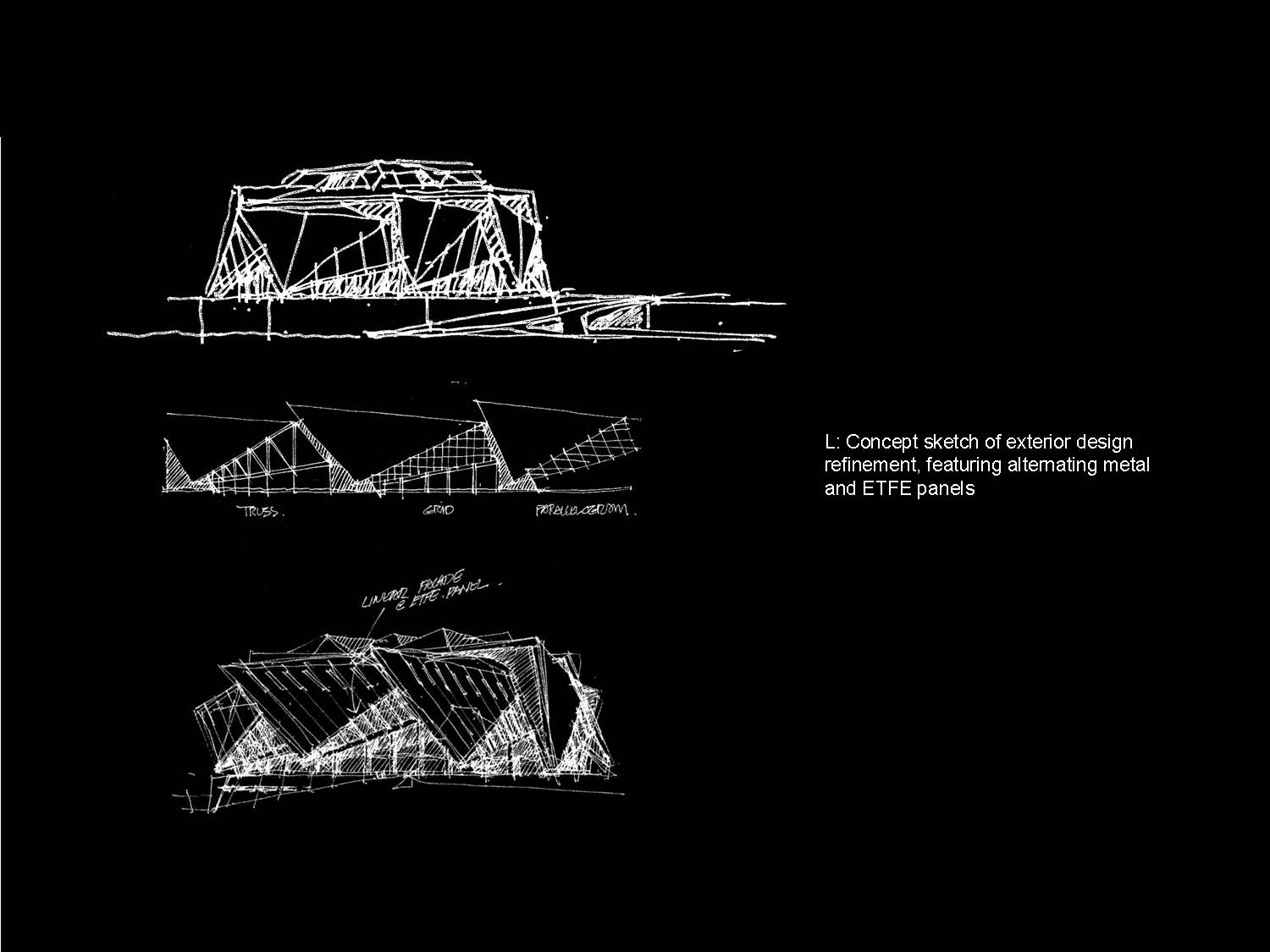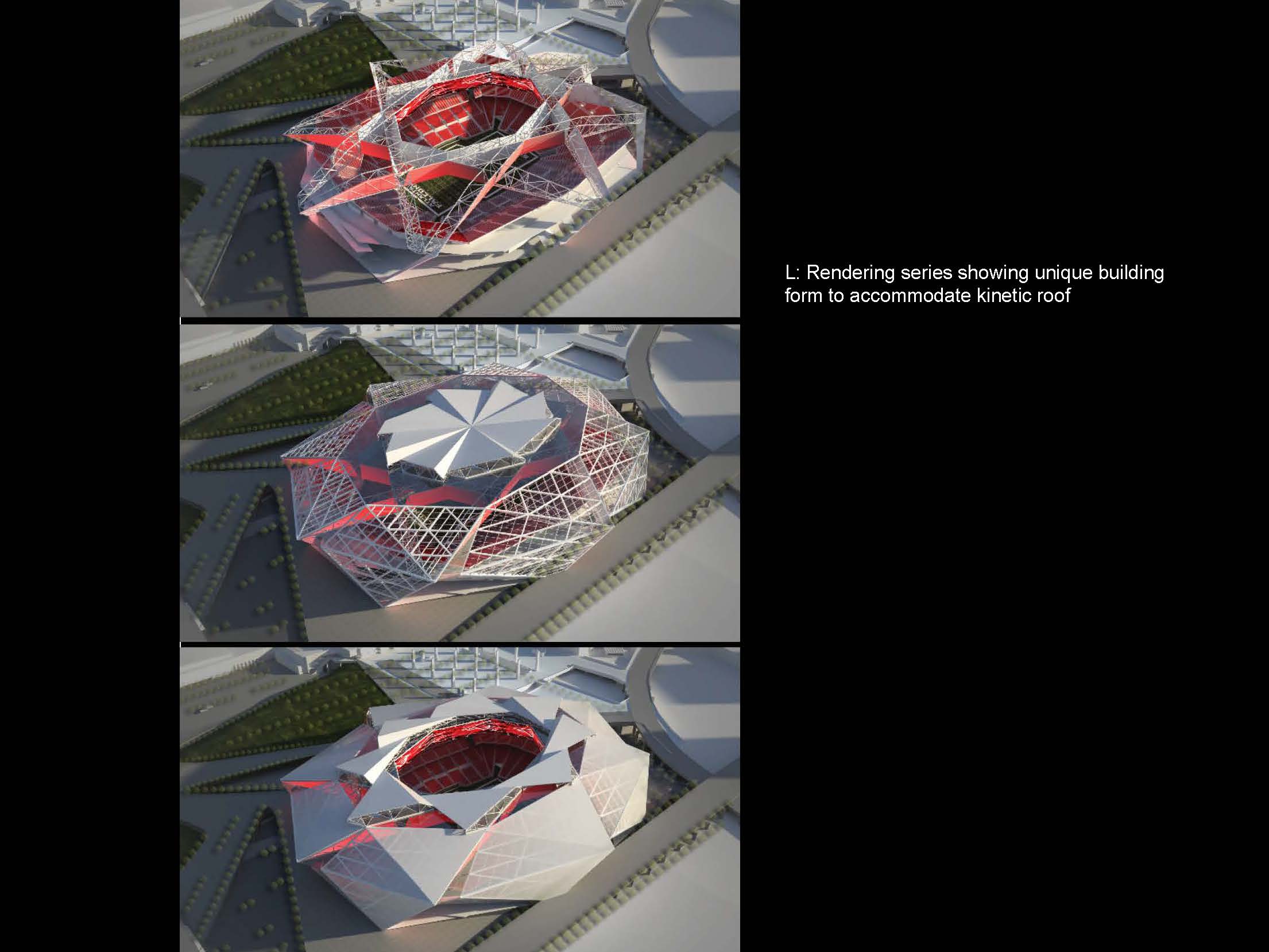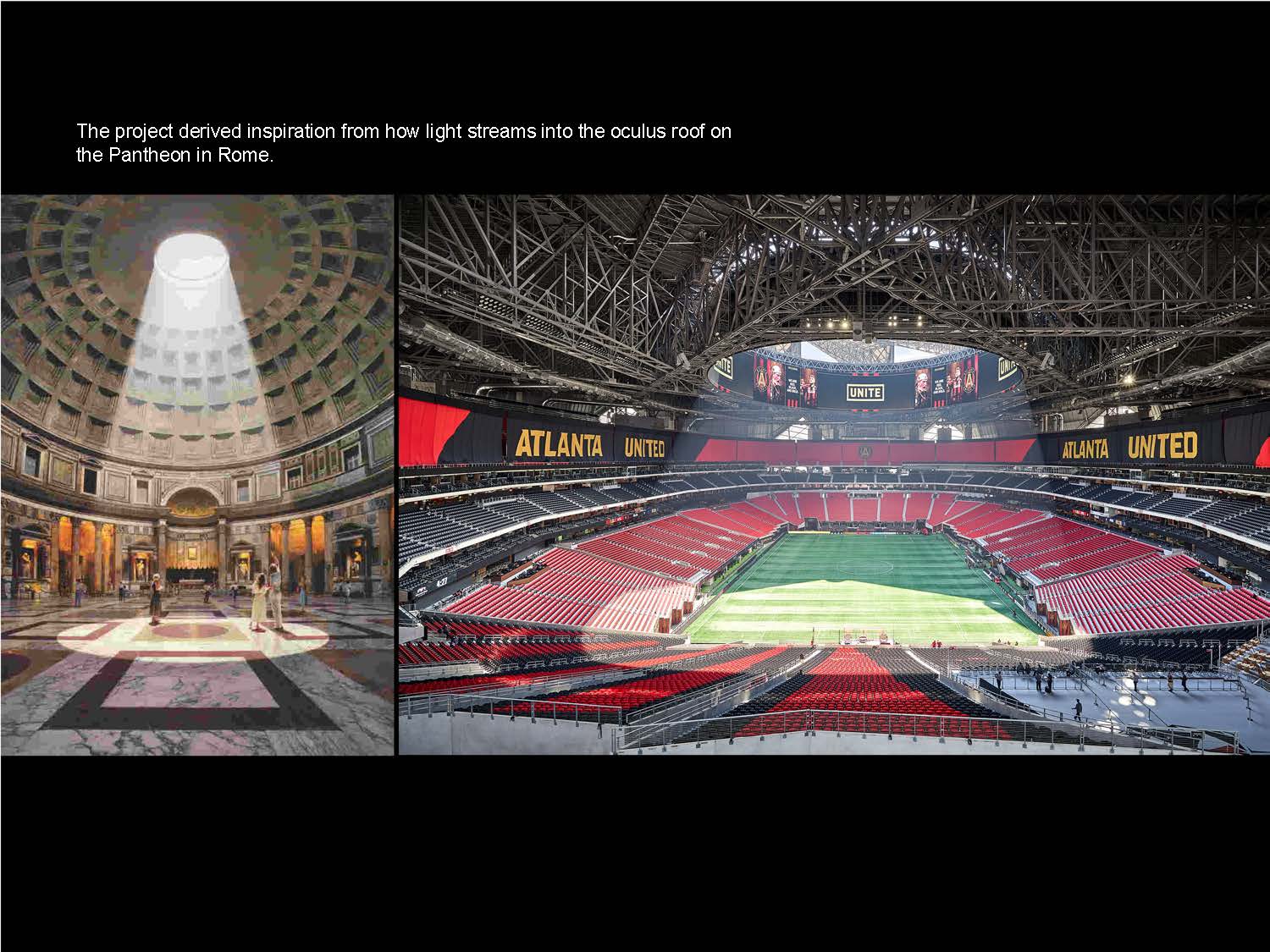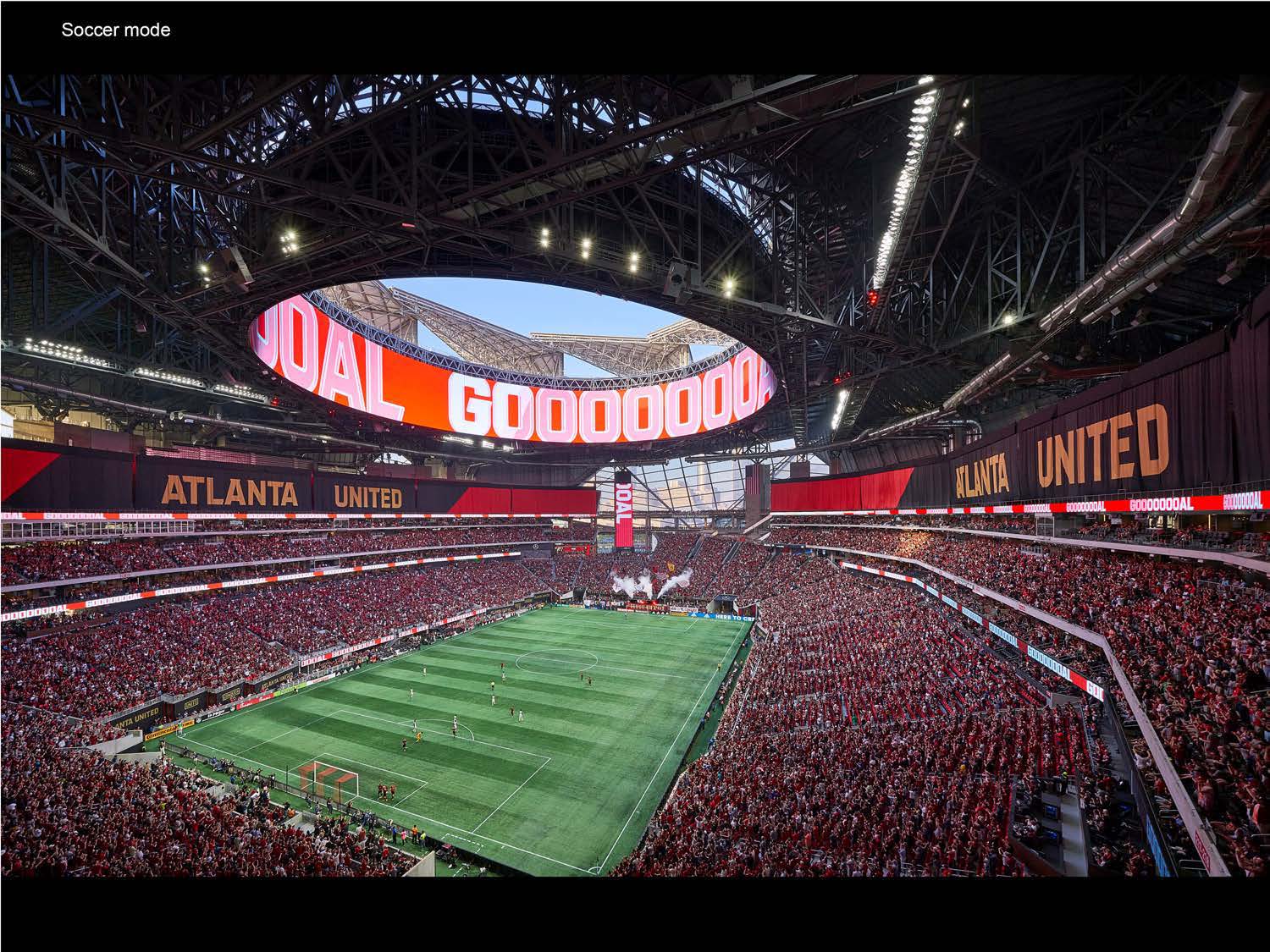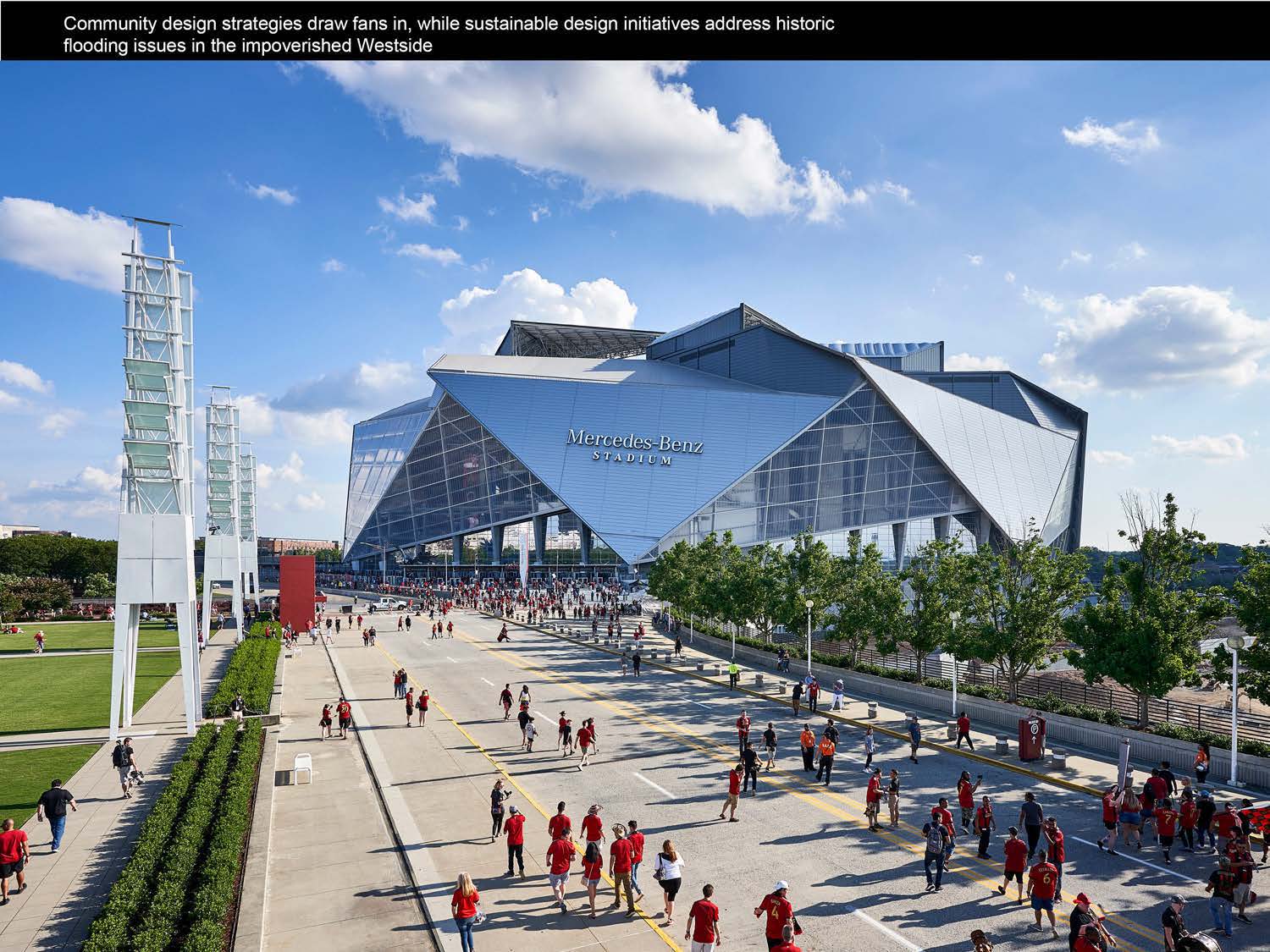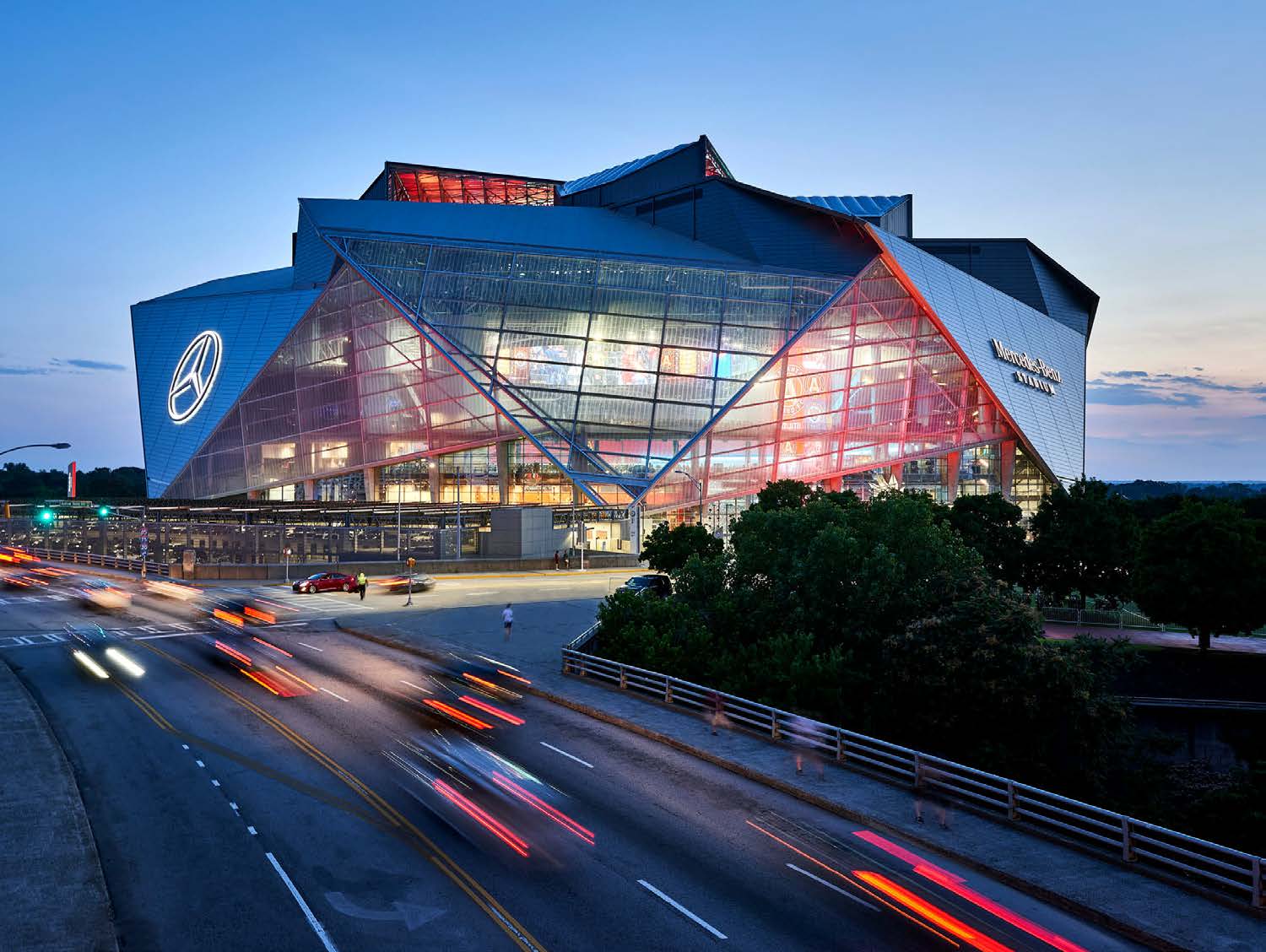Mercedes-Benz Stadium
Mercedes-Benz Stadium reimagines a century-long legacy of stadium design. Responding to the client’s challenge to innovate on every level, the design team set out to create a landmark that raises the profile of not only the stadium’s teams but the Atlanta metropolitan area.
Until now, retractable roof stadiums had featured utilitarian sliding panels. Mercedes-Benz Stadium breaks that convention with a first-of-its-kind retractable roof inspired by the Pantheon in Rome and its rooftop oculus that floods the building with natural light. Composed of eight triangular ethylene tetrafluoroethylene (ETFE) “petals” that move together along 16 individual tracks, the semi-transparent roof opens and closes like a camera aperture.
As a continuation of the roof, the ETFE façade features angular, wing-like exterior sections, inspired by the Falcon’s wing. The transparency creates a 16-story “window to the city” that draws in more daylight and offers panoramic views of Atlanta’s skyline.
Wrapping the perimeter of the roof opening is a high-definition, 360-degree halo video board that gives fans an immersive, theater-in-the-round experience. At nearly six stories high and one-fifth of a mile (1,075 feet) in circumference, this one-of-a-kind video board is the largest in any of the world’s stadiums and provides clear views from every seat while preserving the beauty of the roof.
The team designed the stadium with flexibility to be easily reconfigured to accommodate games for the Atlanta Falcons and Atlanta United, as well as world-class events including the Super Bowl, NCAA Basketball Final Four, FIFA World Cup and a variety of concerts and cultural events. Retractable seats surround the field and a motorized curtain system encloses upper-level seating, providing soccer fans with an intimate experience. An entirely digital stadium technology platform allows for the creation of custom content for each event.
Mercedes-Benz Stadium is North America’s first LEED Platinum professional sports stadium. A 680,000-sq.-ft. cistern recaptures and reuses rainwater for irrigation, helping to address historic flooding issues in the neighborhood. The site also has more than 4,000 solar panels. The focus on sustainability extends into the community through connections to public transit and the creation of urban farming and open recreation areas on nearby sites. The stadium serves as a milestone for innovation in sports facility design and a model for how form and function blend.


